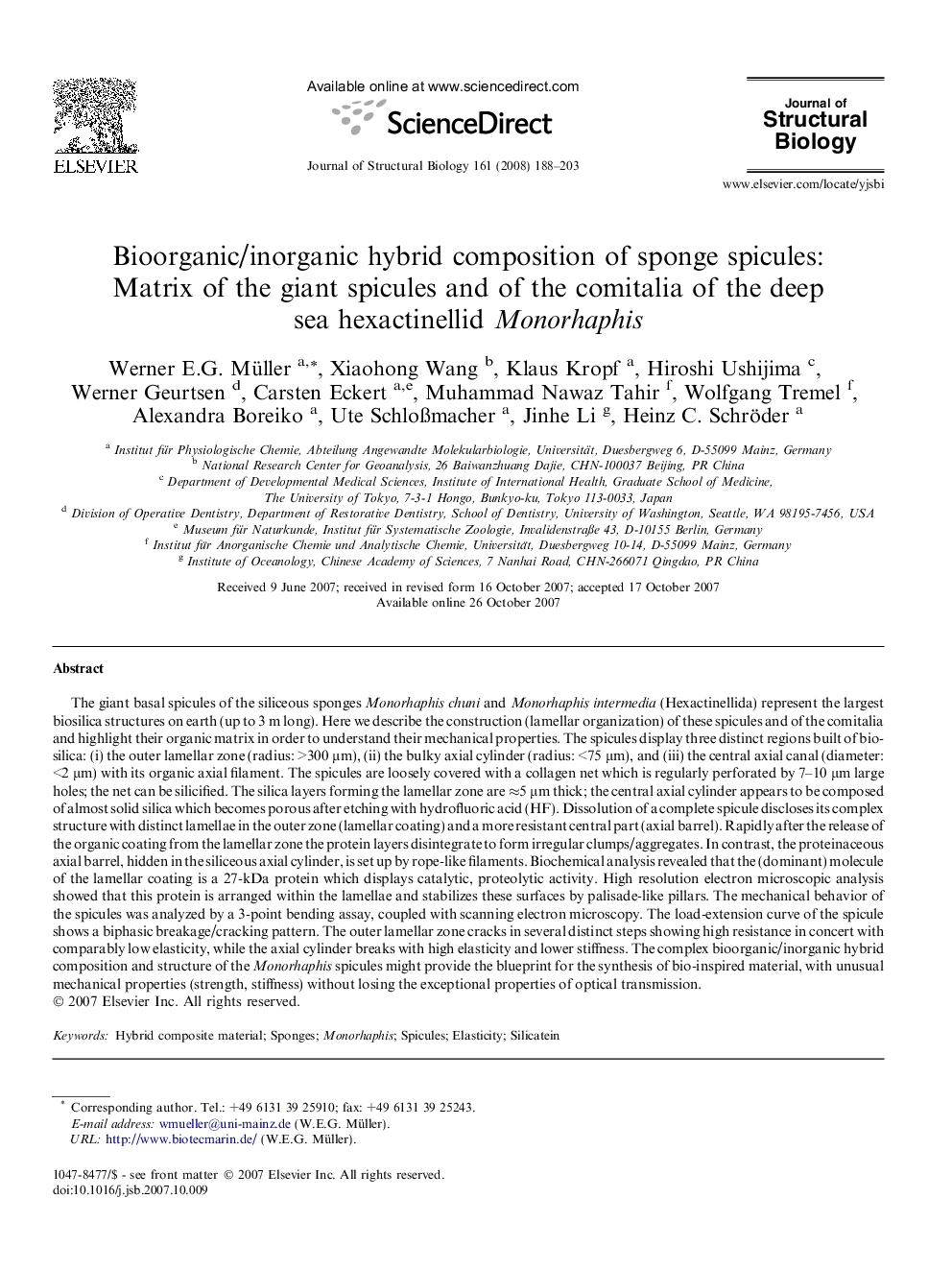| کد مقاله | کد نشریه | سال انتشار | مقاله انگلیسی | نسخه تمام متن |
|---|---|---|---|---|
| 2829053 | 1162782 | 2008 | 16 صفحه PDF | دانلود رایگان |

The giant basal spicules of the siliceous sponges Monorhaphis chuni and Monorhaphis intermedia (Hexactinellida) represent the largest biosilica structures on earth (up to 3 m long). Here we describe the construction (lamellar organization) of these spicules and of the comitalia and highlight their organic matrix in order to understand their mechanical properties. The spicules display three distinct regions built of biosilica: (i) the outer lamellar zone (radius: >300 μm), (ii) the bulky axial cylinder (radius: <75 μm), and (iii) the central axial canal (diameter: <2 μm) with its organic axial filament. The spicules are loosely covered with a collagen net which is regularly perforated by 7–10 μm large holes; the net can be silicified. The silica layers forming the lamellar zone are ≈5 μm thick; the central axial cylinder appears to be composed of almost solid silica which becomes porous after etching with hydrofluoric acid (HF). Dissolution of a complete spicule discloses its complex structure with distinct lamellae in the outer zone (lamellar coating) and a more resistant central part (axial barrel). Rapidly after the release of the organic coating from the lamellar zone the protein layers disintegrate to form irregular clumps/aggregates. In contrast, the proteinaceous axial barrel, hidden in the siliceous axial cylinder, is set up by rope-like filaments. Biochemical analysis revealed that the (dominant) molecule of the lamellar coating is a 27-kDa protein which displays catalytic, proteolytic activity. High resolution electron microscopic analysis showed that this protein is arranged within the lamellae and stabilizes these surfaces by palisade-like pillars. The mechanical behavior of the spicules was analyzed by a 3-point bending assay, coupled with scanning electron microscopy. The load-extension curve of the spicule shows a biphasic breakage/cracking pattern. The outer lamellar zone cracks in several distinct steps showing high resistance in concert with comparably low elasticity, while the axial cylinder breaks with high elasticity and lower stiffness. The complex bioorganic/inorganic hybrid composition and structure of the Monorhaphis spicules might provide the blueprint for the synthesis of bio-inspired material, with unusual mechanical properties (strength, stiffness) without losing the exceptional properties of optical transmission.
Journal: Journal of Structural Biology - Volume 161, Issue 2, February 2008, Pages 188–203